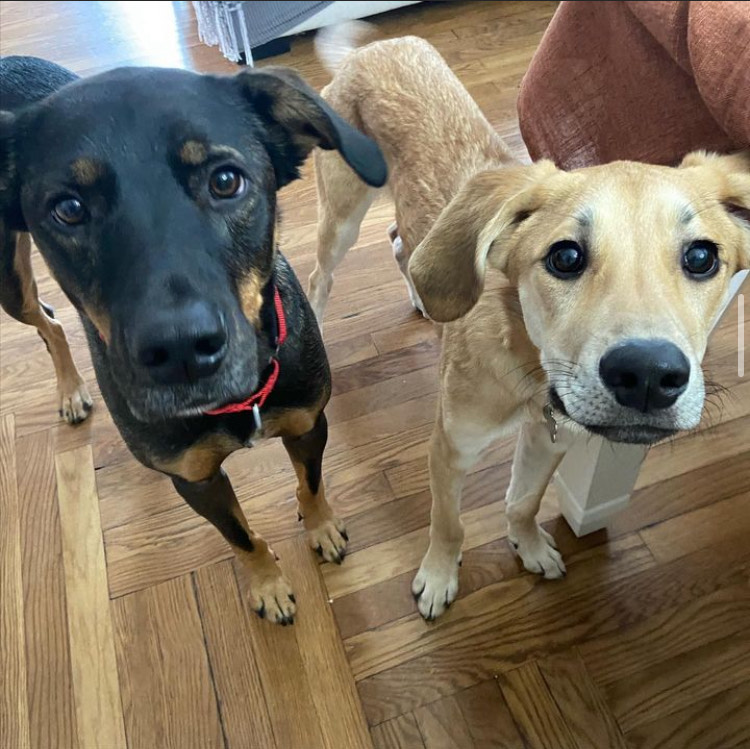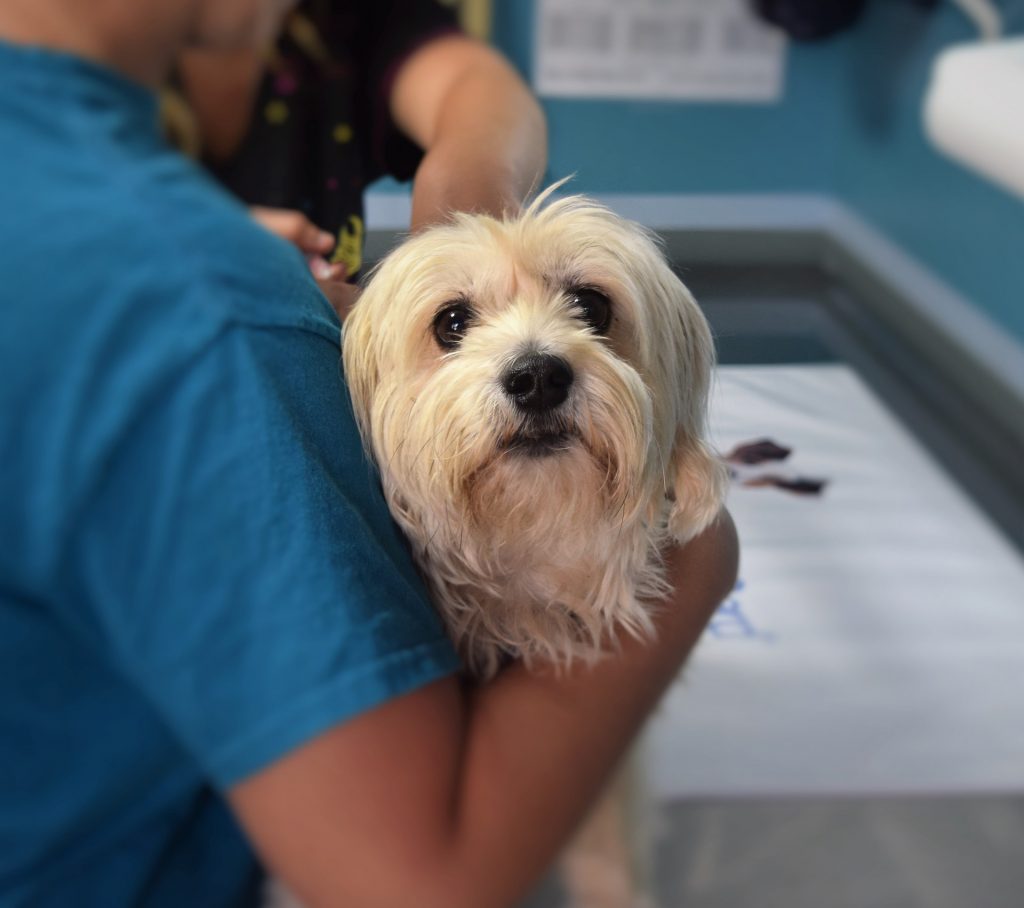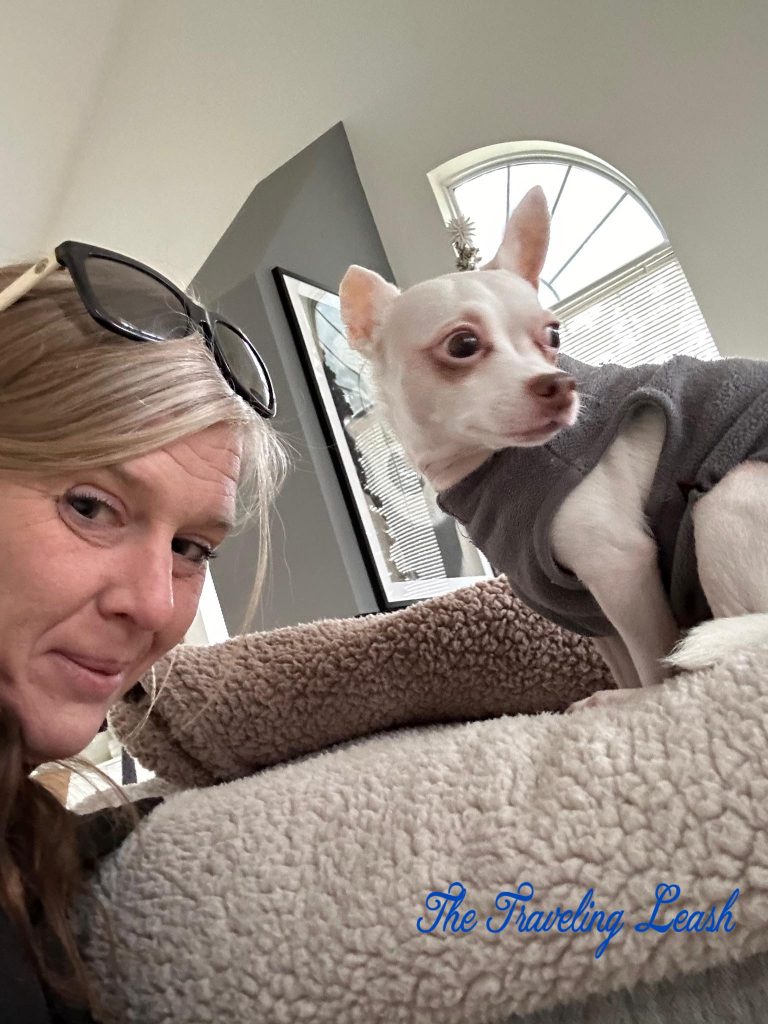The coughing started with Captain, a 7-year-old shepherd mix. A week later shepherd mix Jet, 4, started to cough and sneeze. Just weeks earlier the dogs had been boarded overnight for Halloween and owner Alexis K. of Cornwall assumed they had picked up kennel cough, a highly contagious respiratory disease in dogs. When the coughs hadn’t subsided after one week the vet prescribed antibiotics for both dogs. A week later Captain was healthy again while Jet had a residual cough but otherwise, he seemed to be fine, or so his family thought.
“My husband called me at work one day and said that Jet seemed lethargic and was acting weird and he thought we should take him back to the vet,” said Alexis K., who added that Jet seemed fine when she left for work that morning.
They got an appointment for the following day. But then Jet took a turn for the worse and was unresponsive so he was rushed to VCA Flannery Animal Hospital in New Windsor. After several X-rays he was diagnosed with pneumonia in one lung and put back on antibiotics.
“It just happened so quickly that Jet went from seeming to be better to being very sick,” Alexis K. said. “His PCR test came back negative, so we still have no idea what he had. He does seem like he’s good now, there’s no coughing or any other symptoms.”

Captain (left) and Jet (right). Photo Courtesy of Alexis K.
A statement released by VCA Animal Hospitals in November 2023 announced that various veterinary clinics had reported an increase in cases of canine respiratory illness in some states. Symptoms ranged from mild upper respiratory signs to severe pneumonia. According to the American Veterinary Medical Association (AVMA), most dogs with canine infectious respiratory disease complex (CIRDC) will have only mild illness, recovering fully within 7 to 10 days. Typically, only a small percentage of dogs will develop more severe disease, depending on the infecting organism or organisms and the dog’s ability to fight it.
Is There Evidence of Atypical Canine Infectious Respiratory Disease in New York State?
As of the middle of December, the Louisiana State University School of Veterinary Medicine reported that “cases of atypical canine infectious respiratory disease complex” had been seen by veterinarians in 18 states—New York state wasn’t on that list.
Cornell University College of Veterinary Medicine in Ithaca, NY is investigating the canine respiratory syndrome through a rapid response research project funded by Cornell’s Richard P. Riney Canine Health Center. According to veterinary experts at the university, while some dog daycares have observed symptoms that are suggestive of upper respiratory infection, no official reports have been made regarding the presence of atypical canine respiratory disease in New York State.
Veterinary researchers say that “Without formal testing and a comprehensive understanding of individual cases or groups, confirming the existence of canine respiratory disease across multiple locations is challenging.” And without a centralized reporting system, veterinarians can’t confirm if there is a spike in respiratory illness or the severity of the illness in the state.
Veterinarians Caution Dog Owners Against Panicking
According to the AVMA, outbreaks of CIRDC occur regularly, and the recent outbreak isn’t a cause for alarm. In December veterinarians quoted in an NPR article and on a News 12 broadcast cautioned dog owners not to panic about the atypical canine respiratory illness.
“It’s something we’re keeping our eye on but the numbers are not huge and the majority of dogs are doing well even if they develop disease,” said Assistant Professor of Veterinary Science at Cornell University, Patrick Carney in the News 12 report.
In a recent webinar hosted by Trupanion, veterinary panelists said that it appears certain parts of the country are experiencing a spike in canine respiratory illness. However, the overwhelming media coverage of an atypical canine respiratory virus and the attention it’s getting on social media may have created the appearance of a nationwide outbreak that may not exist in reality, according to panelist Scott Weese, an infectious disease veterinarian at Ontario Veterinary College.
Weese believes that trends occurring during the COVID pandemic of the past few years could have led to this recent spike in respiratory infections. For example, there’s been an increase in dog ownership, and vaccinations and other veterinary care were disrupted during the pandemic.
“So, what the net result could be is we have more dogs that have a lower level of resistance because they’ve been exposed less over the last couple of years, and they’ve had less vaccination,” Weese said. “So that means just as with our normal respiratory disease that’s always there – always circulating around – we can see more disease and more spikes.”

Image by J C from Pixabay
Causes of Upper Respiratory Infection in Dogs
According to the ASPCA Pet Health Insurance, company upper respiratory infections in dogs are caused by bacterial, viral, or parasitic infections that affect the lungs and airways.
- Bordetella (also known as kennel cough) is one of the more common bacterial causes of upper respiratory infection in dogs.
- Parainfluenza is one of the top viral causes of upper respiratory infections in dogs. Other viruses that can lead to this illness include Adeno Type II, Canine Influenza Virus (CIV), and Distemper. The Distemper or DA2PP vaccine is generally recommended for all dogs to keep them safe from these viruses.
- Some parasites, for example, nasal mites can cause upper respiratory infections in dogs. Symptoms of this type of infection include reverse sneezing, snorting, difficulty breathing, and nasal discharge.
The cause of the atypical canine respiratory disease being reported by veterinarians across the country has yet to be determined. We reached out to veterinary researchers at Cornell’s Riney Canine Health Care Center for the most recent update. Here’s what the veterinary community knows right now:
The New Hampshire Veterinary Diagnostic Laboratory (NHVDL) and the Hubbard Center for Genome studies (HCGS) at the University of New Hampshire have preliminary findings in the diagnostic investigation regarding the recent atypical respiratory syndrome in dogs. Preliminary findings suggest the potential involvement of a non-culturable bacterium, tentatively named IOLA KY405, similar to a pathogen associated with respiratory disease in humans in 2021.
In his “Worms and Germs” blog Weese shares that he doesn’t believe this new bacterium will end up being a driver of widespread disease. “It’s possible, but there’s a long way to go before we can say that with any confidence,” writes Weese.
Meanwhile, experts at the AVMA say that while veterinarians can’t rule out the possibility that a new organism may be responsible for the outbreak, “…current disease patterns aren’t consistent with the emergence of a new, easily transmitted pathogen.”
Common Symptoms of Canine Respiratory Disease
VCA Animal Hospitals advises dog owners to monitor their pets carefully for the following signs of respiratory illness:
- Coughing
- Sneezing
- Nasal or eye discharge
- Rapid or labored breathing
- Lethargy or weakness
- Decreased appetite or refusal to eat
- Fever
How to Prevent the Spread of Canine Respiratory Disease
Jet and Captain started coughing within weeks of being boarded but Alexis K. said that she doesn’t blame the boarding facility for her dogs’ illness.
“We love our boarding facility and have been sending our dogs there for years,” Alexis K. said. “They will not take dogs unless they have all the necessary vaccines and they track those to make sure they are renewed.”
According to a Washington Post article, experts don’t know how contagious the atypical canine respiratory disease is or how it’s spread. But the assumption is that, like with other respiratory diseases, it spreads as dogs inhale aerosolized particles from infected dogs, said Kurt Williams, the director of the Oregon Veterinary Diagnostic Laboratory at Oregon State University. Respiratory diseases can also spread via contaminated objects and surfaces.
If you do plan on using a doggy daycare or boarding kennel, make sure the facility requires proof of vaccinations for all dogs. The AAHA offers a great online checklist for choosing the right vaccines for your dog based on his or her lifestyle, including spending time in daycare or kennels. Additionally, doggy daycares and kennels should be using best practices when keeping their facilities clean and sanitized.
Practicing good hygiene is also essential for pet sitters and dog walkers who care for animals in multiple households. Best hygiene practices for sitters and walkers will include hand washing and or using hand sanitizer between visits to help prevent the spread of germs and disease.
Pet parents, too, play a big role in preventing the spread of canine respiratory illness. For example, if your dog is showing signs of illness, don’t send him or her to doggy daycare or a boarding kennel. Also, avoid the local dog park or walking your dog in public places where you are likely to meet other dogs. It’s important to remember that after being exposed there can be an incubation period of 2 to 10 days before you see symptoms that your dog might have an upper respiratory infection. This means that your dog can spread the illness to other dogs even before you know that he is sick.

Erin Talarico visiting with Butter, who is just one of the many dogs in The Traveling Leash family.
How to Protect Your Dog Against Canine Respiratory Illness
Certain dogs are more vulnerable when it comes to developing an upper respiratory infection. Those include seniors who may have underlying health conditions, unvaccinated puppies, and flat-faced breeds such as pugs, Boston terriers, and bulldogs whose anatomy makes it more difficult for them to breed.
VCA Animal Hospitals offers the following tips to reduce the risk of canine respiratory exposure and sickness
- Keep your dog’s annual respiratory disease vaccinations up to date
- Limit your dog’s time around other dogs
- Reduce time at doggy daycare
- Limit time in boarding facilities
- Consider in-home pet sitters
- Avoid dog parks and other public areas
- Avoid communal water bowls
Finally, while it’s understandable that pet parents are concerned about the outbreak of canine respiratory illness, it’s important to keep things in perspective. That means turning to reliable sources for updates and taking the necessary precautions to protect your dog. Veterinary experts say that the easiest and most preventive way to protect your pet is to make sure his or her respiratory vaccines are up-to-date. If you’re unsure about the status of your dog’s vaccinations, now is the time to call and seek advice from your veterinarian to ensure your dog has the best protection.
Following are three sources to help you stay updated on the atypical canine respiratory illness:
Cornell Richard P. Riney Canine Health Center
